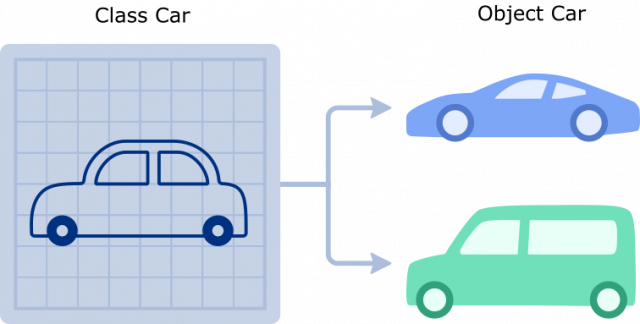Introduction
Python is a powerful and easy-to-learn programming language.
It has efficient high-level data structures and a simple but effective approach to object-oriented programming.
Python’s elegant syntax and dynamic typing, along with its interpreted nature, make it an ideal language for scripting and rapid application development in many domains on most platforms.
Object oriented programming
Object-oriented programming (OOP) is a programming paradigm that was developed to address the limitations of procedural programming, which places more emphasis on processing (procedure, function) than on data.
This programming model organizes software design around data called objects.
Objetc
An object is the basic unit of object-oriented programming.
It allows to model a concept or an entity of the physical world.
It is described by an identity, a state and a behavior.
Example: an object modeling a car
| Identity |
| Identifier |
| State |
| Company Brand Engine Color |
| Behavior |
| Start Accelerate Decelerate Stop |
An object is a data structure that responds to a set of messages.
This data structure defines its state while the set of messages it includes describes its behavior:
- The data, or fields, that describe its internal structure are called its attributes;
- The response to the reception of a message by an object is called a method (method of implementing the message); it describes what response should be given to the message.
Example: object modeling a car
| Object 1 |
| Attributes Toyota Corolla Gasoline Blue |
| Methods start() accelerate() decelerate() stop() |
| Object 2 |
| Attributes Seat Ibiza Diesel Green |
| Methods start() accelerate() decelerate() stop() |
Class
The main goal of object-oriented programming is to define the data and the functions that operate on it in a single entity called a class, so that no other part of the program can access that data except for those functions.
A class is a user-defined data type.
An object is an instance of a class.
A class is a template (blueprint, prototype) used to create an object and it defines the attributes and methods associated with that object.
Example: Class modeling a car
| Class |
| Attributes Company Brand Engine Color |
| Methods start() accelerate() decelerate() stop() |
